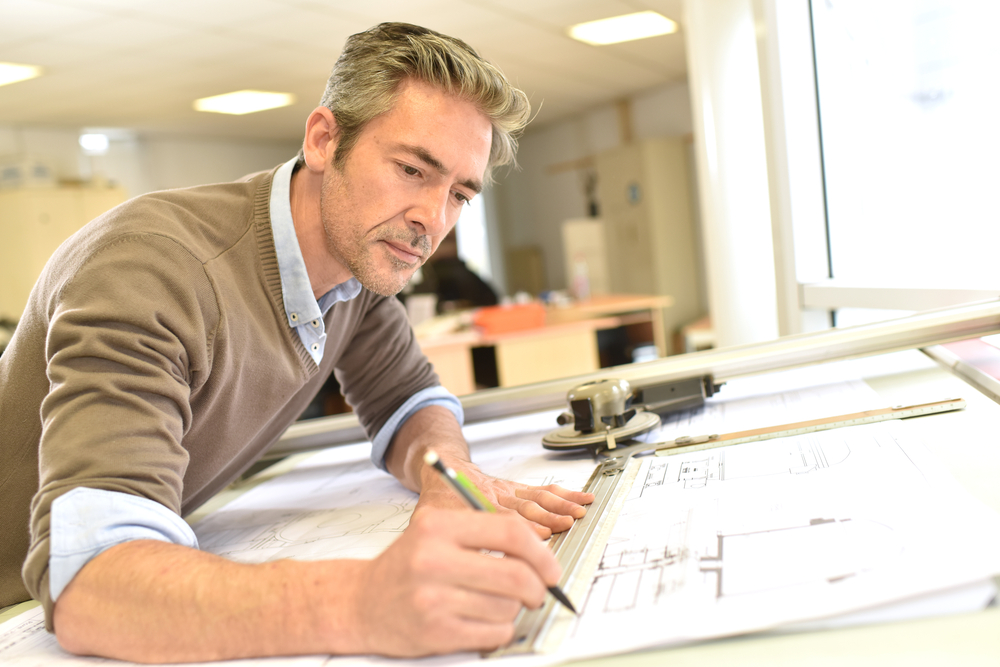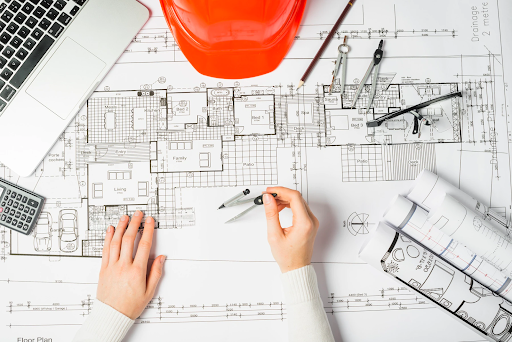Understanding the Diverse Profession Paths Available for Aspiring Architect
As an aspiring Architect, you have a globe of job courses waiting for you. Whether you're drawn to standard style or the nuances of sustainable style, there's a particular niche that aligns with your rate of interests.
Standard Style: Creating Buildings and Structures
Typical architecture concentrates on developing structures and frameworks that mix functionality with aesthetic allure. As you explore this area, you'll appreciate the elaborate equilibrium in between type and purpose. You'll discover to draw motivation from historical styles, integrating aspects like balance, products, and workmanship. Your styles can show social heritage, showcasing regional customs while satisfying contemporary requirements.
You'll create abilities in preparing, model-making, and website evaluation, permitting you to envision and connect your ideas efficiently. Engaging with clients, you'll require to recognize their vision and convert it right into possible designs.
In addition, constructing codes and sustainability methods are necessary in your work, ensuring your frameworks are risk-free and environmentally pleasant. As you expand in your profession, you'll find possibilities in property, commercial, or also repair projects, each offering unique obstacles. Welcoming conventional design leads the way for a satisfying career that admires the past while shaping the future.
Urban Preparation: Shaping Areas and Public Spaces
As a hopeful Architect, you can play a crucial function as an urban coordinator, changing exactly how areas connect and work. By using community involvement techniques, you'll assure that locals have a voice fit their setting. Plus, incorporating sustainable design principles will certainly assist develop spaces that not only fulfill today's needs yet also secure the future.
Role of Urban Planners
While numerous might think of architects as the single dreamers behind structures, metropolitan coordinators play a crucial duty in forming the more comprehensive landscape of areas and public rooms. By collaborating with various stakeholders, you'll help develop parks, transportation systems, and property locations that advertise social communication and accessibility. Your expertise in spatial layout and area characteristics permits you to visualize future development while maintaining social heritage.
Area Engagement Methods
Reliable community involvement strategies are crucial for city planners to ensure that the voices of residents are heard and valued in the preparation process. To cultivate meaningful discussion, you should prioritize open discussion forums and workshops where area members can express their ideas and issues. By actively integrating and paying attention comments, you'll produce areas that mirror the area's demands, ultimately leading to more lasting and effective urban atmospheres.
Sustainable Style Principles
When creating metropolitan areas, including lasting layout concepts is crucial for creating settings that grow both environmentally and socially. You need to begin by concentrating on energy efficiency, using materials that reduce waste and advertise recycling. Take into consideration incorporating environment-friendly areas, like parks and gardens, to enhance biodiversity and improve air top quality. Advertising walkability and public transportation can decrease dependence on vehicles, fostering a healthier area.
Designing with water conservation in mind is additionally essential-- think about rainfall gardens and absorptive surfaces to manage stormwater. Including community members throughout the planning procedure guarantees that the rooms you create satisfy their needs and urge social interaction. By accepting these principles, you'll add to vivid, sustainable city landscapes that benefit everybody.

Landscape Style: Developing Lasting Outdoor Environments
As you explore landscape design, you'll uncover necessary design principles that create functional and lovely outside areas. Lasting practices play a crucial function in making sure these settings flourish while lessening ecological effect. And also, you'll find a variety of career possibilities that allow you to make an actual difference in just how individuals communicate with nature.
Layout Principles in Landscape
Understanding design principles in landscape style is crucial for producing lasting exterior environments that integrate with nature. You'll require to consider aspects like balance, percentage, and range to ensure your styles feel natural and inviting. In addition, pay attention to seasonal changes, designing with products that complement the environments year-round.
Sustainable Practices Summary
Lasting practices in landscape design not just concentrate on aesthetics however additionally focus on ecological health and wellness and source preservation. You can develop areas that advertise dirt health, such as using natural products and exercising permaculture principles. Ultimately, these methods ensure your layouts profit both individuals and the setting for years to come.
Career Opportunities Exploration
With a strong foundation in lasting techniques, landscape style offers a variety of career paths that allow you to make a purposeful effect on the setting. You could work as a landscape designer, creating aesthetically pleasing and functional outside areas, or concentrate on eco-friendly remediation, assisting to restore broken environments. Urban organizers often work together with landscape designers to produce eco-friendly spaces in metropolitan setups, enhancing city livability. If you're passionate regarding education and learning, think about coming to be a landscape architecture teacher, motivating future generations. Additionally, you may collaborate with nonprofits concentrated on environmental sustainability or take part in research to introduce new techniques. Each path not just shapes beautiful settings however also cultivates a much healthier world for future generations.
Sustainable Design: Focusing on Eco-Friendly Practices
As you discover your occupation in style, embracing eco-friendly practices can establish you apart in a competitive field. Sustainable layout concentrates on creating structures that minimize ecological effect while improving owner wellness. By integrating eco-friendly materials, energy-efficient systems, and lasting building strategies, you'll add to a greener future.
Begin by obtaining expertise of green accreditations like LEED or BREEAM, which can reinforce your credentials. Think about just how natural light, ventilation, and thermal effectiveness can enhance layout. Collaborate with designers and ecological consultants to introduce options that minimize waste and conserve sources.
Don't fail to remember the significance of neighborhood participation-- appealing local stakeholders can influence designs that harmonize with the atmosphere. As clients increasingly focus on sustainability, your proficiency in green practices will not just bring in projects yet likewise accomplish your passion for accountable style. Accept this vital element of the profession, and watch your occupation thrive.
Historic Preservation: Shielding and Recovering Cultural Heritage
While you commence on your building journey, think about the essential role of historic preservation in maintaining our cultural heritage. This field concentrates on the security and restoration of considerable structures, sites, and frameworks that inform the tales of our past. By taking part in historical conservation, you'll help protect the architectural tradition that forms community identification.
As a historical preservation Architect, you'll examine historical significance and analyze the condition of frameworks. You'll function very closely with chroniclers and preservationists to assure genuine repair techniques are used. This occupation path permits you to blend imagination with research, allowing you to create solutions that value initial materials and workmanship.
Your job not only adds to sustainability by reusing existing structures but likewise promotes a feeling of satisfaction within communities. Welcoming this path will aid you end up being a guardian of background, maintaining the stories and visual appeals that enrich our lives.
Interior Architecture: Enhancing Indoor Spaces
Historical preservation and indoor design both share a commitment to improving the constructed environment, but they concentrate on different facets. While historical preservation highlights preserving a framework's historical and social worth, indoor architecture zeroes in on enhancing interior rooms for functionality and appearances.
As an aspiring Architect, you'll discover that indoor style permits you to blend imagination with technological abilities. You'll design areas that not only look great but likewise advertise convenience and performance. This field includes comprehending just how light, shade, and materials interact within an area, influencing state of mind and functionality.
You'll work with different tasks, from residential homes like this to commercial offices, ensuring that each environment meets the requirements of its occupants. By prioritizing individual experience, you can transform insides right into motivating and functional rooms, making a significant effect on exactly how individuals communicate with their environments. Embrace the chance to boost interior settings and form the method individuals live and function.
Industrial Layout: Combining Functionality With Appearances
Commercial layout plays an essential role in creating items that effortlessly blend aesthetic appeals with performance, guaranteeing that what you use day-to-day is not only visually enticing however also sensible. As a hopeful Architect, you can engage on your own in this field, concentrating on designing everything from furnishings to consumer electronic devices. Your work involves comprehending user demands, materials, and making processes, permitting you to produce innovative options that enhance day-to-day experiences.
In industrial design, you'll typically work together with manufacturers, marketers, and engineers, ensuring that your layouts are not just attractive yet likewise possible. This profession course supplies a vibrant atmosphere where creativity meets practicality, making it a fulfilling selection for designers interested in shaping the products of tomorrow.
Regularly Asked Concerns
What Educational Credentials Do I Need to Come To Be a Designer?
To become an engineer, you'll need a professional level in design, generally a Bachelor's or Master's. Additionally, you'll need to complete a teaching fellowship and pass the Architect Enrollment Assessment to practice legitimately.
Exist Certification Needs for Different Building Job Paths?
Yes, there're accreditation requirements for numerous architectural courses. Architect. You'll require to pass exams, complete teaching fellowships, and in some cases pursue specialized training, relying on your selected focus, like landscape style, city style, or historical conservation
What Software Application Abilities Are Crucial for Engineers Today?

How Can I Gain Practical Experience While Researching Design?
You can gain practical experience by interning at building companies, participating in layout competitions, offering for neighborhood projects, or working together with classmates on real-world tasks. These chances boost your skills and build useful connections in the sector.
What Job Opportunities Exist Outside Standard Architecture Firms?
You can check out various task possibilities outside conventional style firms, like metropolitan preparation, interior decoration, landscape architecture, building monitoring, realty development, or even duties in sustainability consulting. Each deals unique challenges and benefits.
Whether you're attracted to traditional design or the subtleties of lasting design, there's a particular niche that aligns with your rate of interests.When creating city spaces, integrating lasting layout principles is vital for developing atmospheres that thrive both ecologically and socially.As you check out landscape design, you'll uncover important style concepts that develop useful and stunning outdoor areas.Understanding style concepts in landscape style is vital for developing sustainable exterior environments that balance with nature.In commercial find out design, you'll commonly collaborate with marketers, designers, and suppliers, guaranteeing that your styles are not just attractive but likewise viable.
Comments on “Architect Guide to Sustainable Building Materials”